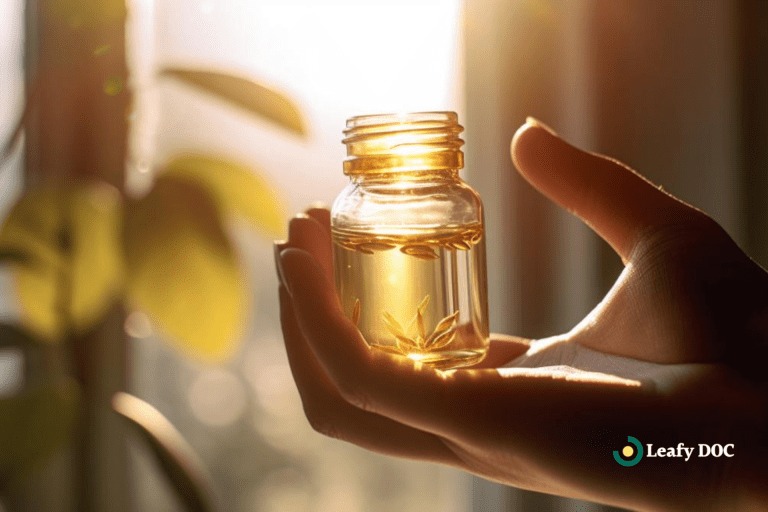Vulvodynia
Can medical cannabis help people with this condition? Find out more below.
What is Vulvodynia?
Vulvodynia is a chronic pain condition affecting the vulva, the external female genitalia. It is characterized by unexplained and persistent pain or discomfort in the vulvar area, including burning, stinging, itching, or throbbing sensations. The pain can be constant or intermittent and may be triggered by touch or pressure, such as during sexual intercourse or wearing tight clothing. Vulvodynia can have a significant impact on a woman’s quality of life, affecting her emotional well-being, relationships, and daily activities.
What causes it?
The exact cause of vulvodynia is not fully understood, and multiple factors likely contribute to the development of the condition. Some potential causes or contributing factors include nerve damage or irritation, inflammation, hormonal imbalances, genetic factors, or a history of sexual trauma or abuse. Certain chronic conditions, such as fibromyalgia or irritable bowel syndrome, have been associated with an increased risk of developing vulvodynia. It is important to note that, in many cases, the cause of vulvodynia remains unknown, making it challenging to diagnose and treat.
How common is it?
Vulvodynia is more common than many people realize, but the exact prevalence is difficult to determine due to underdiagnosis and the sensitive nature of the condition. Estimates suggest that it affects approximately 10 to 28 percent of women at some point. However, these numbers might not fully represent the true prevalence, as many women may not seek medical help or receive an accurate diagnosis. The condition can occur at any age, but it is most commonly reported among women in their reproductive years, with a peak in incidence between the ages of 18 and 25.
Are there types/stages?
Yes, there are different types of vulvodynia, which are generally classified based on the location and nature of the pain. The two primary types are:
- Localized Vulvodynia: In this type, the pain is confined to a specific area of the vulva. The most common subtype of localized vulvodynia is Vestibulodynia (previously known as Vulvar Vestibulitis), characterized by pain in the vestibule, the area surrounding the vaginal opening. Pain in Vestibulodynia is usually triggered by touch or pressure, such as during sexual intercourse, tampon insertion, or prolonged sitting.
- Generalized Vulvodynia involves pain or discomfort affecting multiple areas or the entire vulva. The pain can be constant or intermittent and may not have an identifiable trigger. It can also vary in intensity and may be exacerbated by certain activities or situations, such as sitting for long periods, wearing tight clothing, or during sex.
Some healthcare providers may also use additional classifications based on the onset of symptoms, duration, and provocation of pain:
- Provoked vulvodynia: Pain occurs in response to specific triggers or stimuli, such as touch or pressure.
- Unprovoked vulvodynia: Pain occurs spontaneously, without any identifiable cause or trigger.
- Mixed vulvodynia: A combination of provoked and unprovoked pain.
There are no specific “stages” of vulvodynia, as it is a chronic pain condition rather than a progressive disease. However, the severity and duration of symptoms can vary significantly among individuals. Some women may experience temporary pain episodes, while others may suffer persistent, long-lasting discomfort. Working with a healthcare professional to develop a personalized treatment plan to manage and alleviate symptoms is crucial.
Signs & Symptoms
The primary symptom of vulvodynia is persistent pain or discomfort in the vulva, which is the external female genital area that includes the mons pubis, labia, clitoris, and vaginal opening. The nature and intensity of the pain can vary among individuals, and some may experience more than one type of discomfort.
Signs and symptoms of vulvodynia may include:
- Burning or stinging sensations: Many women with vulvodynia describe a burning or stinging pain in the vulvar area, ranging from mild to severe.
- Itching: Persistent itching or irritation in the affected area can be a symptom of vulvodynia.
- Throbbing or aching pain: Some women may experience a constant or intermittent throbbing or aching pain in the vulva.
- Rawness or soreness: The vulvar skin may feel raw, tender, or sore to the touch.
- Pain during or after intercourse: Vulvodynia can cause pain during or after sexual activities, leading to avoidance of sex, decreased libido, and relationship difficulties.
- Pain or discomfort during other activities: Sitting for long periods, wearing tight clothing, riding a bike, or inserting tampons can trigger or worsen vulvar pain in some individuals.
Diagnosis & Treatment
Diagnosing vulvodynia can be challenging, as there is no definitive test to identify the condition, and its symptoms can resemble those of other vulvar or gynecological disorders. The diagnostic process usually involves a thorough medical history, a physical examination, and the exclusion of other potential causes.
A healthcare provider may perform a cotton-swab test, gently pressing various areas of the vulva with a cotton swab to identify the specific location and intensity of the pain. Other tests, such as pelvic exams, lab tests, or biopsies, may be performed to rule out infections, skin conditions, or other underlying issues that could be causing the symptoms.
There is no one-size-fits-all treatment for vulvodynia, as the most effective approach varies from person to person. Treatment often involves a combination of therapies to manage pain and improve the quality of life. Some of the treatment options include:
- Medications: Topical anesthetics, tricyclic antidepressants, anticonvulsants, or oral pain relievers may be prescribed to help alleviate pain.
- Physical therapy: Pelvic floor physical therapy can help address muscle imbalances, strengthen pelvic muscles, and reduce pain.
- Biofeedback therapy involves learning to control physiological functions to reduce pain and muscle tension.
- Cognitive-behavioral therapy (CBT): CBT can help individuals develop coping strategies and address the emotional impact of living with chronic pain.
- Lifestyle modifications: Avoiding irritants, using gentle personal care products, wearing loose-fitting clothing, and using lubricants during sexual activity can help minimize discomfort.
- Nerve blocks or surgery: In some cases, nerve blocks or surgical interventions may be recommended if other treatments have not provided relief.
Can medical cannabis help?
Medical marijuana, also known as medical cannabis, has been found to have potential benefits in managing chronic pain conditions, including vulvodynia. The primary active compounds in cannabis, delta-9-tetrahydrocannabinol (THC) and cannabidiol (CBD), interact with the body’s endocannabinoid system, which plays a crucial role in regulating pain, inflammation, and other physiological processes.
Medical marijuana may help alleviate vulvodynia symptoms in the following ways:
- Pain relief: Both THC and CBD have been shown to possess analgesic properties. They can help reduce pain by interacting with the endocannabinoid system and modulating pain-signaling pathways in the central nervous system.
- Anti-inflammatory effects: CBD has demonstrated potent anti-inflammatory properties, which may help reduce inflammation in the vulvar area, possibly contributing to vulvodynia.
- Muscle relaxation: Cannabis can help relax muscles and reduce muscle spasms, which may benefit women with vulvodynia, particularly if they have associated pelvic floor muscle tension or dysfunction.
- Anxiety and stress reduction: Medical marijuana can help reduce anxiety and stress levels in some individuals, benefiting those experiencing emotional distress or increased pain sensitivity due to anxiety.
Last Updated: June 14, 2024
Get Your Medical Card
Connect with a licensed physician online in minutes
Table of Contents
Keep Reading
-
Convenience And Precision: The Rise Of CBD Capsules
Unlock the ultimate convenience and precision with CBD capsules! Dive into the trend that’s changing the game in wellness. Click here to discover more.
-
Optimize Your Fitness Routine With Cannabis
Transform Your Fitness Regimen with Cannabis: Elevate Your Workouts to New Heights. Unleash the Power of Cannabis for Optimal Performance Today!
-
What Is Marijuana Wax?
Unleash the Power of Marijuana Wax: The Ultimate Guide to this Revolutionary Concentrate. Find out how marijuana wax is transforming the cannabis industry now! Click here for all the mind-blowing details and join the revolution today.



